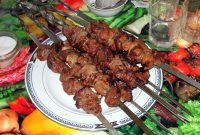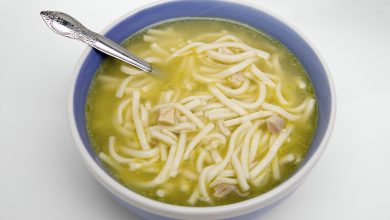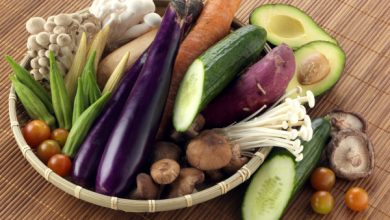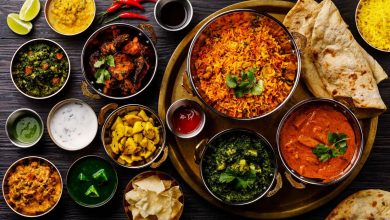Russian cuisine today”
Where did the national food system come from and what is it going to
In March, a lot of Russians, even those who are loosely identified with the Orthodox faith, try to go on some kind of pious diet. And this is a completely correct impulse, since fasting is a natural state for our body. About the peculiarities of the nutrition of our ancestors and about what was left on our table from that cuisine, Ogonek talked with a culturologies, food historian, Professor Anna Pavlov kaya.
– Nobody doubts the existence of Italian, French, Chinese, Japanese, Mexican cuisine. But when talking about Russian cuisine, doubts often arise. What’s wrong with her?
– The question of what Russian cuisine is is really extremely debatable. Many, if they talk about it, then in the past tense: they say, there was such once. Someone believes that it existed before the era of Peter the Great. Others are sure that French borrowings of the 19th century broke it. Still others blame the revolution and globalization of the last century for the death of Russian cuisine. But in fact, Russian cuisine still exists today, of course, because our people exist with their own unique food tradition.
— Are you talking about the basics of national cuisine?
– Undoubtedly. What we eat is not just a collection of random foods. Any nation has its own nutrition system, which has developed under the influence of a variety of factors – historical, cultural, geographical, religious, and so on. It has a core, which is called the basic basis and which was formed under the influence of not only social, but also biological factors.

The fact is that in all cultures the basic core of nutrition necessarily contains all the substances necessary for life – proteins, fats, carbohydrates, vitamins and microelements. It’s just that different nations get the same set from different sources. This rule works even in relation to the peoples of the North, who traditionally hunted literally one or two species of marine animals. They get all the missing vitamins and enzymes from products obtained by fermenting meat, fat, viscera, blood, and so on.
The nature of the basic products significantly affects the culture as a whole. For example, if we take the English, then there the word meat – meat at one time meant food in general. Hence strange combinations, like sweetmeat, literally “sweet meat”, to refer to sweets. In Russian, the word “bread” corresponded to the concept of “food”, hence “sip” in the meaning of eat. And in Chinese, the concept of “eating” is literally translated as “eating rice”, breakfast is early rice, dinner is midday rice, and so on.
— What does the basic basis of Russian cuisine look like?
Most of it is carbohydrate. So the statement “bread and porridge is our food” is entirely true, whether we like it or not. Bread, cereals, cereal soups, kissel, pies, pancakes, pancakes – they were both a holiday, and everyday life, and a snack in the field, and a ritual offering. The difference between weekdays and the holiday was in the amount of food and in the addition of meat, which has always been exclusively festive food.
– And when was such a specific “national menu” formed?
– It’s a long time ago, it’s worth starting with the so-called Neolithic revolution, which began about 10-11 thousand years BC, when a person, for unknown reasons, decided to produce food himself: to breed animals and grow grain. At that time, a food division occurred: some peoples fell in love with grain, becoming, relatively speaking, grain eaters, others, nomads and pastoralists, built their food system on meat and milk.
– Who is more in the world today?
– In the course of history, the grain-eaters won. In general, grain crops (51 percent) predominate in the diet of the planet’s inhabitants today. Grain eaters began to add fat, vitamins, proteins, and so on to the basic element. These additives have pronounced local and regional characteristics – this is how the national cuisine was formed.

– Can you give an example?
– The most ancient civilizations of grain-eaters lived on the Apennine Peninsula. A cult was formed there around the wheat that grew well here. Flat cakes, bread, cereal stews with a variety of additives appeared on the table. Gradually, the classic Mediterranean food triad is being developed here: bread, olive oil – a source of essential fat and vitamins – and … wine, which has always been an important source of vitamins, minerals and enzymes produced during natural fermentation. Cheese also appears here very early.
What about pasta and pizza? Fish after all?
– Pasta appeared in southern Italy much later – somewhere in the XII-XIV centuries. Italy became a “nation of pasta” only at the end of the 18th – beginning of the 19th century, then, due to crop failure and famine, pasta turned out to be the cheapest and easiest way to saturate. Although in fact it was all the same products – grain, wine, cheese, vegetables and occasionally, as a small addition, meat.
There are very few peoples in which fish is included in the basic basis. There were no fish eaters as such in European culture. English archaeologists are surprised at the absence of fish bones in the excavations: people who lived on an island surrounded by the sea ate only fruits and meat.
And what kind of grains did you like with us?
– In the 19th century, they wrote that we have three kingdoms: the south is wheat, the north (where nothing actually ripened) is barley, and the central and most extensive part is rye. It was rye bread that was a favorite dish for a long time: initially it was a separate meal, and not an addition to something basic.
Another important part of the cuisine was porridge, they were prepared from different grain crops. They crushed the same barley, rye, wheat. They loved buckwheat very much, which appeared very early in Russia, becoming its hallmark. Buckwheat, by the way, like other cereals, was used as a filling for pies.
Add kvass here, which, in fact, is also liquid fermented bread. It was an extremely important part of nutrition, being a source of vitamins and minerals that we could not get with vegetables and herbs due to climatic conditions, although they were traditionally present on the Russian table in a minimal amount.



